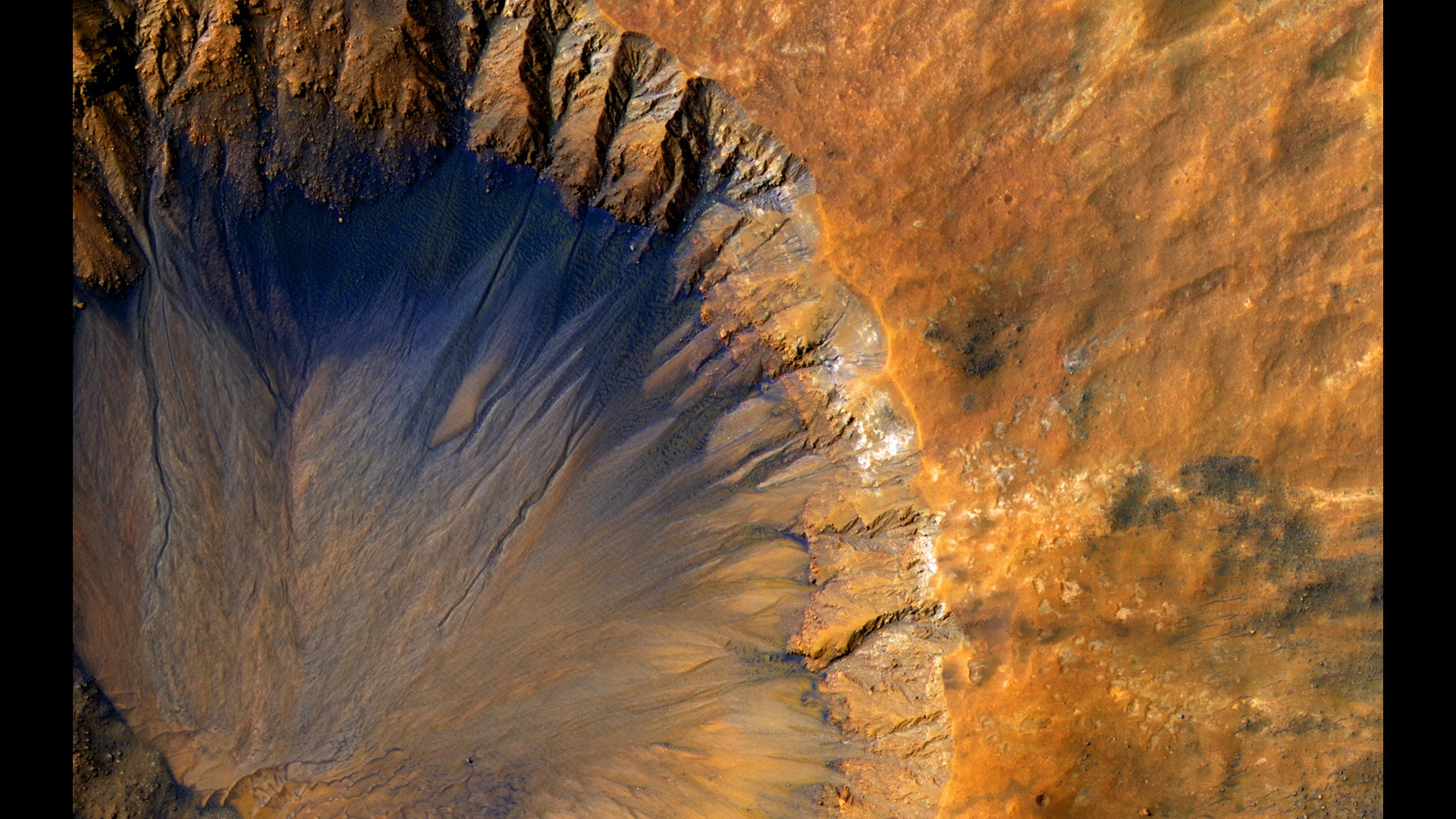



Revolutionized is reader-supported. When you buy through links on our site, we may earn an affiliate commision. Learn more here.
The dusty red planet used to be abundant with liquid water. Oceans and rivers dominated its surface — now, only ice remains in its polar caps. New seismic data reveals that Mars still holds liquid water in a large underground reservoir that is too deep to access. The curious question now persists: could humans potentially drink water from Mars?
While the question of potability and human consumption seems deceptively simple, the reality could be far more complicated.
It’s a common belief that liquid water on Mars vanished about 3 billion years ago. However, new scientific evidence reveals that water could have flowed on Mars as recently as 2 billion to 2.5 billion years ago, longer than previously believed. This water vanished when the planet lost its magnetic field. Without the protective shield, solar winds stripped away much of the Martian atmosphere, where water either sublimed away to space or retreated into the recesses of the ground.
Today, water on Mars exists in three primary forms — subsurface ice, saline water reservoirs and hydrated minerals. The amount is so massive that it could turn the planet into an ocean that’s 1-mile-deep.
Ice deposits under Martian ground are found predominantly in the planet’s polar regions and mid-latitudes. This ice could be a promising water resource but is often buried beneath layers of regolith. Beneath the south polar cap, salty water reservoirs are believed to remain liquid due to their extreme salinity and, possibly, geothermal heating. Minerals across the surface also contain bound water molecules, reflecting remnants of the planet’s much wetter past.
While the sources of Martian water sound abundant, accessing and purifying it is a non-trivial task that requires addressing its chemical and physical properties.
The biggest obstacle to drinking Martian water is the presence of perchlorates. These chlorine-charged compounds are abundant in the planet’s soil. On Earth, perchlorates are highly hazardous contaminants, even at low concentrations. The Environmental Protection Agency (EPA) limits an oral reference dose of 0.0007 mg/kg daily for perchlorate. Chronic exposure can interfere with the normal functions of the thyroid glands, leading to an iodine deficit as it gets blocked from entering the organ.
Removing perchlorate is paramount if humans want to turn water from Mars into a potable resource. The problem with purifying Martian water is that traditional water purification methods such as ion exchange, reverse osmosis or chemical neutralization are unfeasible because they rely on consumable materials and high energy demands. The need for a sustainable, scalable solution has driven the development of innovative approaches.
A promising solution lies in leveraging microbes to detoxify Martian water. Scientists are engineering microbial systems capable of reducing perchlorates into harmless chloride ions and oxygen. Perchlorate-reducing bacteria are extremophiles and can survive in up to 10,000 mg/L of perchlorate concentrations. While unfeasible for use outside of Earth, their pcrAB and cld genes have shown significant potential in lab settings. By transferring these genes into the robust and spaceflight-proven bacterium Bacillus subtilis, researchers aim to create a system that efficiently eliminates perchlorates.
While highly promising, this method is still in the experimental phase. Challenges include ensuring microbial stability under Martian conditions, optimizing reaction rates and integrating the system into a broader water processing infrastructure.
Before liquid water can be harnessed, it must first be located with precision. The International Mars Ice Mapper aimed to locate accessible water-ice reserves on the Red Planet through high-resolution images. Pinpointing accessible water sources can inform the site selection for future human habitation near ice and brine reserves and exploration missions.
The Mars Ice Mapper’s radar technology could also provide invaluable data on the planet’s geomorphology and history, furthering human understanding of Mars’ climate evolution and habitability.
The discovery of possible subsurface lakes beneath Mars’ south polar cap ignited significant scientific interest. While these reservoirs could serve as valuable liquid water sources, their extreme salinity and potential geothermal heating suggest challenges. The high salt concentration complicates purification and raises questions about the lakes’ long-term stability.
Interestingly, a similar waterbody exists on Earth — Lake Vostok, buried beneath 4000 meters of Antarctica’s ice sheet. Despite inhospitable conditions, Lake Vostok teems with microbial life, a similarity potentially shared by Martian subsurface lakes. This comparison supports the hypothesis that the reservoirs on Mars might harbor extremophiles, which is critical for human use and the development of astrobiology.
Harvesting water from Mars’ subsurface ice or salty water reservoirs requires groundbreaking mining and extracting technologies. In 2008, NASA’s Phoenix lander demonstrated the feasibility of accessing shallow ground ice as it dug into an ice-rich layer just below the surface. However, large-scale operations remain limited as more sophisticated methods of extracting liquid water are required.
More advanced options include thermal drilling, microwave heating and autonomous robots. Thermal drilling bores into the Martian soil using heat probes to melt subsurface ice and then pump it into the surface. However, this is a slow, inefficient process as more than 90% of the heat is lost into the ice.
Microwave heating is another method that uses heat. It has been used to isolate water from icy lunar regoliths and may be used to target water-bound minerals to release water molecules.
Finally, with the rapid development of technology, deploying autonomous robotic systems to mine and preprocess water resources before human arrival could also become a feasible option.
Each of these methods must contend with Mars’ low temperature and thin atmosphere. There is also the problem of equipment degradation due to abrasive soil and corrosive chemicals.
Could humans drink water from Mars? Theoretically, yes.
While the potability of Martian water is exciting, making it a reality is fraught with challenges. Any water extraction or purification process must operate within limited resources and energy availability constraints. Additionally, the equipment can only be deemed successful if it can autonomously withstand the extreme temperatures, dust storms and radiation that plague Mars. Developing and deploying the necessary technologies will require substantial financial resources and international collaboration.
Humanity is inching closer to harnessing Mars’ water resources. In a few decades, there might just be bottled Martian water for public consumption.
Revolutionized is reader-supported. When you buy through links on our site, we may earn an affiliate commision. Learn more here.


This site uses Akismet to reduce spam. Learn how your comment data is processed.